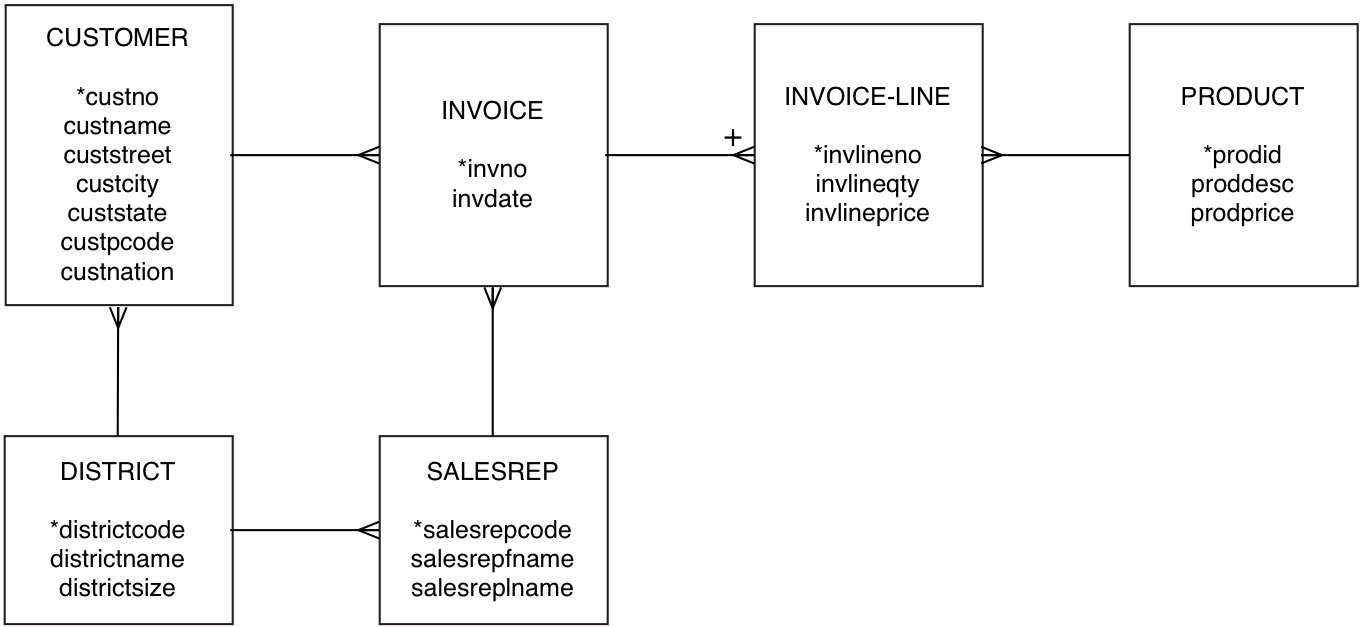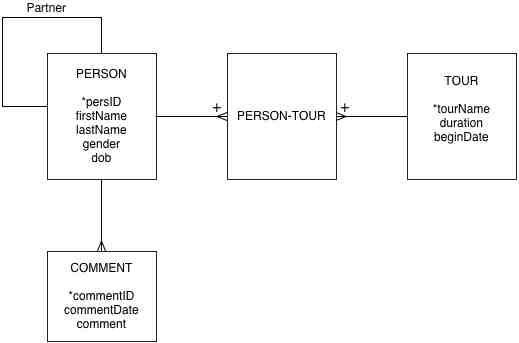

Ken is a tour guide for trips that can last several weeks. He has requested a database that will enable him to keep track of the people who have been on the various tours he has led. He wants to be able to record his comments about some of his clients to remind him of extra attention he might need to pay to them on a future trip (e.g., Bill tends to get lost, Daisy has problems getting along with others). Some times people travel with a partner, and Ken wants to record this in his database.
Design a database using MySQL Workbench. Experiment with Object Notation and Relationship Notation (options of the Model tab) to get a feel for different forms of representing data models.

This page is part of the promotional and support material for Data Management (open edition) by Richard T. Watson |